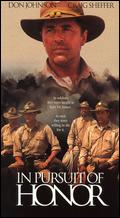A company is a military unit, typically consisting of 100–250 soldiers and usually commanded by a major or a captain. Most companies are formed of three to seven platoons, although the exact number may vary by country, unit type, and structure.

The Philippine Scouts (Filipino: Maghahanap ng Pilipinas or Hukbong Maghahanap ng Pilipinas) was a military organization of the United States Army from 1901 until after the end of World War II. These troops were generally Filipinos and Filipino-Americans assigned to the United States Army Philippine Department, under the command of American commissioned officers (though a handful of Filipino Americans received commissions from the United States Military Academy). Philippine Scout units were given the suffix "(PS)", to distinguish them from other U.S. Army units.

The 2nd Cavalry Regiment, also known as the 2nd Dragoons, is an active Stryker infantry and cavalry regiment of the United States Army. The Second Cavalry Regiment is a unit of the United States Army Europe and Africa, with its garrison at the Rose Barracks in Vilseck, Germany. It can trace its lineage back to the early part of the 19th century.
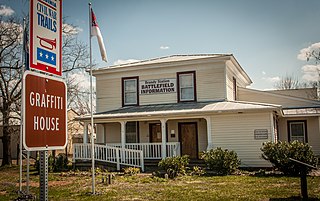
The Graffiti House, located at 19484 Brandy Road in the eastern end of the town of Brandy Station, Virginia, is believed by the Brandy Station Foundation to have been built in 1858. It is one of few dwellings in the village built before the American Civil War to survive intact to this day. The house is notable because of the Civil War era graffiti on many of the walls. The graffiti found includes names, drawings, names of units, and inscriptions left by soldiers.
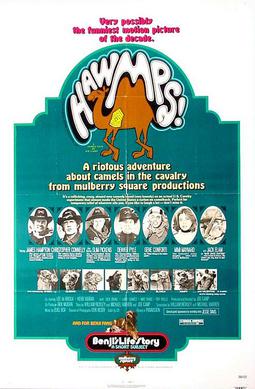
Hawmps! is a 1976 American Western slapstick film about a United States Cavalry experiment to introduce camels into the service in the western United States, specifically Texas. The cast included James Hampton, Christopher Connelly and Slim Pickens.

The Battle of Bear Paw was the final engagement of the Nez Perce War of 1877. Following a 1,200-mile (1,900 km) running fight from north central Idaho Territory over the previous four months, the U.S. Army managed to corner most of the Nez Perce led by Chief Joseph in early October 1877 in northern Montana Territory, just 42 miles (68 km) south of the border with Canada, where the Nez Perce intended to seek refuge from persecution by the U.S. government.

Philip St. George Cooke was a career United States Army cavalry officer who served as a Union General in the American Civil War. He is noted for his authorship of an Army cavalry manual, and is sometimes called the "Father of the U.S. Cavalry."
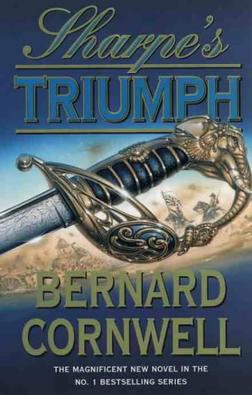
Sharpe's Triumph is the second historical novel in the Richard Sharpe series by Bernard Cornwell, first published in 1998. Sharpe is a sergeant in the army who attracts the attention of General Arthur Wellesley at Ahmednagar.

The 15th Pennsylvania Cavalry Regiment, known as the Anderson Cavalry and the 160th Volunteers, was a three-year cavalry regiment in the Union Army during the American Civil War. It was recruited and formed in the summer of 1862 by officers and men of the Anderson Troop, an independent company of the Pennsylvania Volunteers that had been mustered the previous November.

William Wilson was a United States soldier who served with the United States Army's Cavalry as a sergeant during the mid to late 19th century. He is known for being one of only nineteen individuals to twice receive his nation's highest award for valor, the U.S. Medal of Honor.
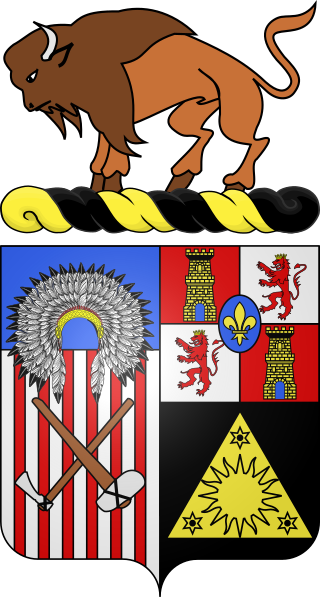
The 10th Cavalry Regiment is a unit of the United States Army. Formed as a segregated African-American unit, the 10th Cavalry was one of the original "Buffalo Soldier" regiments in the post–Civil War Regular Army. It served in combat during the Indian Wars in the western United States, the Spanish–American War in Cuba, Philippine–American War and Mexican Revolution. The regiment was trained as a combat unit but later relegated to non-combat duty and served in that capacity in World War II until its deactivation in 1944.

The Bugle Sounds is a 1942 American World War II movie starring Wallace Beery as a cavalry sergeant resistant to replacing horses with tanks. The supporting cast includes Marjorie Main, Lewis Stone, George Bancroft, Donna Reed, and Chill Wills, and the film was directed by S. Sylvan Simon.

Louis Henry Carpenter was a United States Army brigadier general and a recipient of the Medal of Honor for his actions in the American Indian Wars.
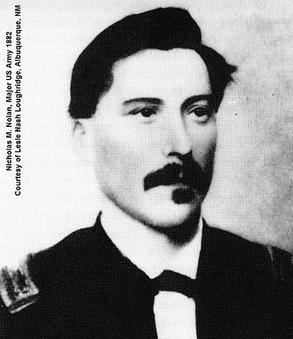
Nicholas Merritt Nolan was a United States Army major. An Irish immigrant, he began his military career in New York on December 9, 1852, with the 4th Artillery, and subsequently served in New York's 2nd Dragoons. He enlisted as a private and rose through the ranks becoming a first sergeant. He was commissioned an officer in late 1862 in the Regular Army, while serving with the 6th U.S. Cavalry Regiment during the American Civil War. He participated in 16 campaigns with the 6th and most of its battles. He was slightly wounded at the Battle of Fairfield and seriously wounded at the Battle of Dinwiddie Court House. He was brevetted twice and noted at least twice for gallantry during combat. He was slightly wounded when captured at the end of March 1865, and was later paroled. After the Civil War, he served with the 10th U.S. Cavalry, known as the Buffalo Soldiers, for 14 years. Nolan is also noted for his pluses and minuses during the Buffalo Soldier tragedy of 1877 that made headlines in the Eastern United States. He was the commanding officer of Henry O. Flipper in 1878, the first African American to graduate from the United States Military Academy at West Point. He commanded several frontier forts before his untimely death in 1883.

The 1st Squadron, 91st Cavalry Regiment (Airborne) is a light Airborne Reconnaissance Squadron currently serving as the 173rd Airborne Brigade's Reconnaissance, Surveillance and Targeting Acquisition (RSTA) Squadron based out of Tower Barracks in Grafenwöhr, Germany. It is the only Airborne RSTA Squadron within the European, Middle East, and Africa (EMEA) area of responsibility.

The Affair of Néry was a skirmish fought on 1 September 1914 between the British Army and the German Army, part of the Great Retreat from Mons during the early stages of the First World War. A British cavalry brigade preparing to leave their overnight bivouac were attacked by a German cavalry division of about twice their strength, shortly after dawn. Both sides fought dismounted; the British artillery was mostly put out of action in the first few minutes but a gun of L Battery, Royal Horse Artillery kept up a steady fire for two and a half hours, against a full battery of German artillery. British reinforcements arrived at around 8:00 a.m., counter-attacked the Germans and forced them to retreat; the German division was routed and did not return to combat for several days. Three men of L Battery were awarded the Victoria Cross for their part in the battle, the battery was later awarded the honour title of "Néry", the only British Army unit to have this as a battle honour.
The 1918 Birthday Honours were appointments by King George V to various orders and honours to reward and highlight good works by citizens of the British Empire. The appointments were made to celebrate the official birthday of The King, 3 June and were published in The London Gazette on the same day, followed by a supplement.
The 1918 New Year Honours were appointments by King George V to various orders and honours to reward and highlight good works by citizens of the British Empire. The appointments were published in The London Gazette and The Times in January, February and March 1918.
A regiment is a military unit that has been in use by the United States Army since its inception. Derived from the concept originating in European armies, a regiment was historically commanded by a Colonel and consisted of ten companies or approximately 1,000 soldiers. Confusingly, the terms regiment and battalion were used interchangeably at this time; it was not until later that a battalion was defined as a sub-unit of a regiment. The regiment fulfilled both administrative and tactical functions and was the principal maneuver unit of the US Army until being superseded in the 20th century by the division.
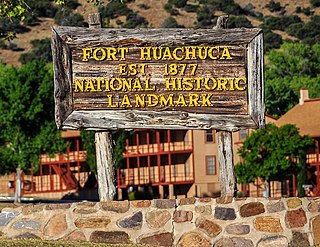
This is a list with images of some of the historic structures and places in the Fort Huachuca National Historic District in Arizona. The district, also known as Old Fort Huachuca, is located within Fort Huachuca an active United States Army installation under the command of the United States Army Installation Management Command. The fort sits at the base of the Huachuca Mountains four miles west of the town of Sierra Vista, on AZ 90 in Cochise County, Arizona.
